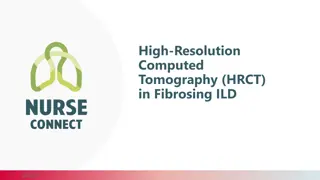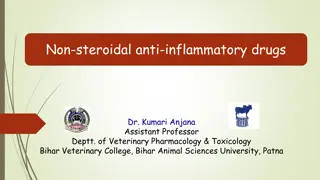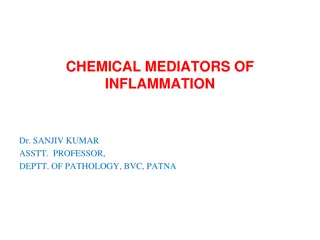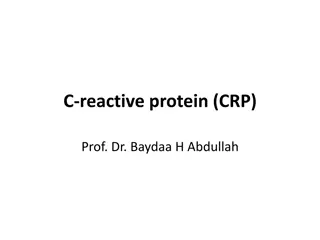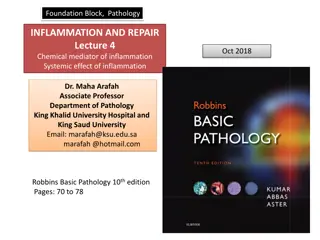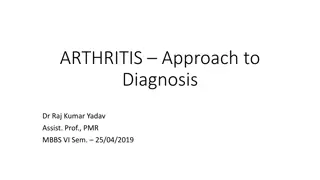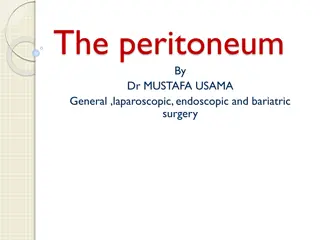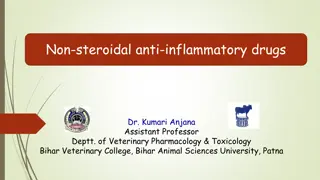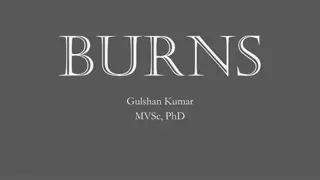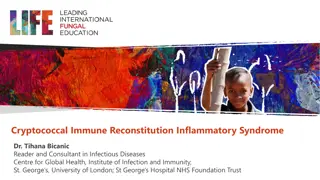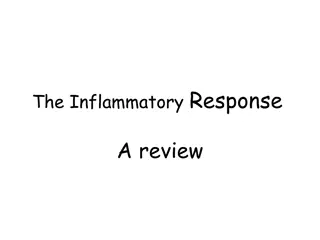Pterygium: Degenerative or Inflammatory Change?
Pterygium, a common ocular surface lesion, has historically been considered degenerative due to factors like UV radiation exposure. However, recent research suggests an inflammatory component with cellular proliferative fibrosis and angiogenesis. This study presented at TOSCON 2024 delves into the histopathological aspects of pterygia, highlighting inflammatory mediators, precursor cells, and potential pre-malignant features. The findings shed light on the complex nature of pterygium formation and recurrence, emphasizing the role of inflammation alongside degeneration.
Download Presentation

Please find below an Image/Link to download the presentation.
The content on the website is provided AS IS for your information and personal use only. It may not be sold, licensed, or shared on other websites without obtaining consent from the author.If you encounter any issues during the download, it is possible that the publisher has removed the file from their server.
You are allowed to download the files provided on this website for personal or commercial use, subject to the condition that they are used lawfully. All files are the property of their respective owners.
The content on the website is provided AS IS for your information and personal use only. It may not be sold, licensed, or shared on other websites without obtaining consent from the author.
E N D
Presentation Transcript
Manoj Mathur E-Poster [IS PTERYGIUM A DEGENERATIVE OR INFLAMMATORY CHANGE ??] [ Dr. SAI TEJA CHEBROLU ] 9thAnnual State Ophthalmological Conference TOSCON 2024 12thto 14thJuly, 2024 at Katriya Hotel & Towers, Hyderabad IS PTERYGIUM A DEGENERATIVE OR INFLAMMATORY CHANGE ?? SEQUENCE NO: EP77 Presented by: Dr. SAI TEJA CHEBROLU PGY 2 MAMATA MEDICAL COLLEGE - KHAMMAM
[IS PTERYGIUM A DEGENERATIVE OR INFLAMMATORY CHANGE ??] [ Dr. SAI TEJA CHEBROLU ] 9thAnnual State Ophthalmological Conference TOSCON 2024 12thto 14thJuly, 2024 at Katriya Hotel & Towers, Hyderabad INTRODUCTION Pterygium is a wing-shaped ocular surface lesion due to bulbar conjunctiva encroaching on the cornea. Historically, pterygium was considered a degenerative process involving Bowman layer degeneration and elastosis. It is characterized by cellular proliferative fibrosis and angiogenesis, strongly associated with UV rays, similar to squamous metaplasia. Molecular genetic alterations in pterygium include loss of heterozygosity, point mutations in proto-oncogenes such as k-RAS, and changes in tumor suppressor genes like p53 or p63. Other associations include frequent HPV DNA detection and ocular surface changes like overexpression of various proteins, including defensins and phospholipases D, and upregulation of growth factors.
[IS PTERYGIUM A DEGENERATIVE OR INFLAMMATORY CHANGE ??] [ Dr. SAI TEJA CHEBROLU ] 9thAnnual State Ophthalmological Conference TOSCON 2024 12thto 14thJuly, 2024 at Katriya Hotel & Towers, Hyderabad MATERIALS & METHODS 50 cases of pterygia were recruited for study purpose. Cases included of primary pterygium admitted through the OPD and recurrent pterygium from nearby district hospitals and sub centres which were earlier done by bare sclera excision or closed using adjacent conjunctival tissue. Pterygium excision was done by Corneal limbal autograft (CLAG) technique under local anaesthesia. Prior informed consent were taken before operation. Specimens were immediately preserved in 10% formalin and sent for histopathological examination.
[IS PTERYGIUM A DEGENERATIVE OR INFLAMMATORY CHANGE ??] [ Dr. SAI TEJA CHEBROLU ] 9thAnnual State Ophthalmological Conference TOSCON 2024 12thto 14thJuly, 2024 at Katriya Hotel & Towers, Hyderabad DISCUSSION Pterygium is a benign conjunctival growth on sclera. In our study we have shown that histopathology of pterygium consists of numerous inflammatory cells. Also there is increase T-lymphocytes, cytokines, growth factors and macrophages. These are also important inflammatory mediators and play role in growth of pterygium. Numerous fibroblasts found indicate actinic induced damage that resulted in formation of abnormal tissue. These hypothesis is supported by high level of inflammatory infiltrate observed in pterygium samples. Also the cases of recurrence and abnormal precursor cells found in histopathological specimen of pterygium warrants a pre malignant potential of pterygium. Angiogenesis Hyperplastic Goblet cells
[IS PTERYGIUM A DEGENERATIVE OR INFLAMMATORY CHANGE ??] [ Dr. SAI TEJA CHEBROLU ] 9thAnnual State Ophthalmological Conference TOSCON 2024 12thto 14thJuly, 2024 at Katriya Hotel & Towers, Hyderabad Histopathology showed in most cases the pterygium specimen exhibits a conjunctivo-epithelial structure consisting of loose fibrous connective tissue with fibrovascular ingrowth. The epithelial coverage appears as a stratified squamous type epithelium without keratinisation covered with vacuolated goblet cells contributing hyperplasia. Significant amount of pterygium tissue comprised of abnormal elastic fibres. Stratified squamous cells The fibres found seemed to be elastic fibre precursors and abnormal maturational forms. There were increase in number of T lymphocytes, cytokines, growth factors and macrophages. Eosinophilic granular material and concretions were also present. Angiogenesis was seen in various slides along with fibrosis.
[IS PTERYGIUM A DEGENERATIVE OR INFLAMMATORY CHANGE ??] [ Dr. SAI TEJA CHEBROLU ] 9thAnnual State Ophthalmological Conference TOSCON 2024 12thto 14thJuly, 2024 at Katriya Hotel & Towers, Hyderabad CONCLUSION Histopathology shows increase goblet cells and inflammatory cells. Increase T-lymphocytes and high levels inflammatory infiltrate found. Based on all these findings it may be suggested pterygium is not always a degenerative process but an inflammatory process as well. It may also have a pre malignant potential as it shows altered histopathological features and recurrence. Hence, it needs further study to understand its premalignant potential.


